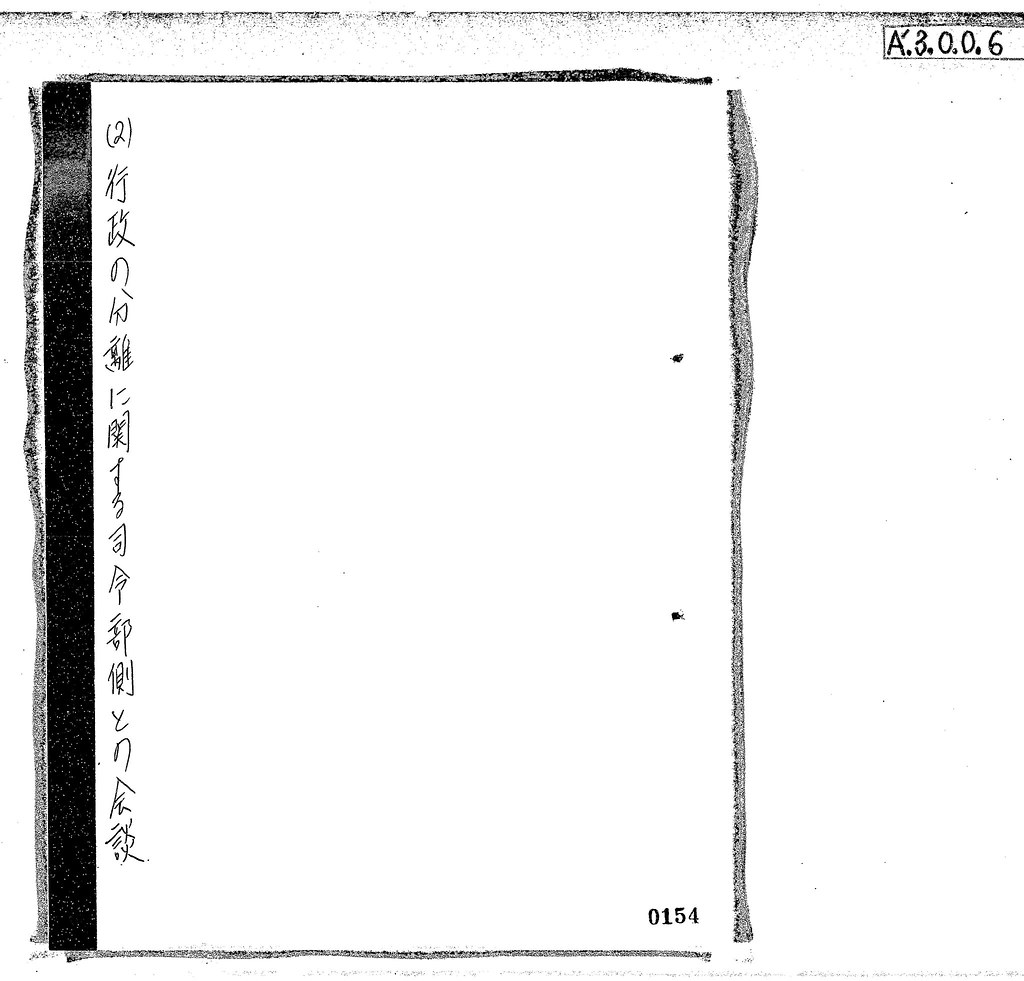"The Ordinance of Prime Minister and Cabinet Office, No.24 and the Ordinance of the Ministry of Finance, No.4 in 1951(昭和26年).”Chosun Ilbo of South Korea made a front page report "Discovery of the Japanese Ordinance Excludes Dokdo from Territory" on January 3 at the beginning of the New Year. They are "the Ordinance of Prime Minister and Cabinet office, No.24"and "Ordinance of the Ministry of Finance, No.4" in 1951, and the name of Takeshima is seen along with Ogasawara Islands and the Iwo-to islands, etc. as islands excluded from Japan.
However, these two laws do not offer any evidences that Japanese Government excluded Takeshima from a "Japanese territory". As Yomiuri Shimbun January 7 may tell, "The laws in concern only for the range where the administrative power of Japanese Government under the occupation during that time reaches to be shown, and is not showing of the range of Japanese territory" (Northeast Asia Division) as an opinion of the Ministry of Foreign Affairs, Japanese government under the occupation of the Allied Powers army at that time in 1951 only followed the clause 3 of SCAPIN677 of General Headquarters/ Supreme Commander for the Allied Powers, which included Takeshima in "Region excluded from the range in Japan" on the administration. It was unrelated to the range in the territory as the instruction was described clearly in clause 6, "Nothing in this directive shall be construed as an indication of Allied policy relating to the ultimate determination of the minor islands referred to in Article 8 of the Potsdam Declaration."
Chosun Ilbo stretch the meaning of parts in The Ordinance of Prime Minister and Cabinet office, No.24 and the Ordinance of the Ministry of Finance, No.4, and it reported that "Japanese Ordinance Excludes Dokdo from Territory". Korea's emeritus professor 金燦奎 of 慶熙 University even made a statement which has illogical leap. He claimed "Japan recovered sovereignty by the San Francisco Peace Treaty which came into effect on April 28, 1952. The Ordinance of Prime Minister and Cabinet office, No.24 was finally revised on July 8, 1961 and the Ordinance of the Ministry of Finance, No.4 was on June 26 , 1968. Those two laws were revised finally way after the Japanese recovery of the sovereignty. Unlike SCAPIN 677 above, Japanese government independently decided those revision without the influence of military administration. The excavation of these laws exactly make our standpoint advantageous in the Dokdo issue." ("Segye Times" Internet dated January 6 version)
However, Mr. Kim's logic turned out to be the theory which urges Korean interpretation of SCAPIN677 actually to be corrected. Korean claim SCAPIN677 Takeshima from Japanese territory. As Prof. Kim pointed out, laws in concern originally defined the islands excluded to be (1) the Kurile (Chishima) Islands, the Habomai Island Group (including Suisho, Yuri, Aki-yuri, Shibotsu and Taraku Islands) and Shikotan island. (2)Ogasawara(Bonin) and Iwo Island Groups (3)Utsuryo (Ullung) island, Take island and Quelpart (Cheju) Island, but the ordinance of Ministry of Finance no.4 which was revised on June 26, 1968 dropped "Ogasawara and Iwo Island Groups".
It is because the day June 26, 1968 when the ordinance of Ministry of Finance no.4 was revised, is the exact day when Ogasawara Islands and the Iwo islands where the United States had been exercising the administrative right were restored to Japan. This is the concrete evidence that those islands which were excluded from Japanese sphere "on administrative purpose"by SCAPIN677 were not actually "excluded" from the territory of Japan. In fact, the area which were also defined as "excluded from Japanese sphere ", such as the Ryukyu (Nansei) Islands south of 30° North Latitude (including Kuchinoshima island), the Izu, Nanpo, Bonin (Ogasawara) and Volcano (Nazan or Iwo) Island Groups, and all other outlying Pacific Islands [including the Daito (Ohigashi or Oagari) Island Group, and Valece Vela (Okino-tori), Marcus (Minami-tori) and Sangos (Nakano-tori) Islands], were returned to Japanese administration later with some exception. Then, naturally, the remaining territorial issue becomes Northern Territories issue, which currently in dispute between Russia, the Kurile Islands, and Takeshima.
This time, Korea's raising issue of Takeshima in two old Japanese laws actually gave us an good opportunity to confirm the fact that Takeshima in clause 3 of SCAPIN677 didn't exclude Takeshima from Japanese territory at all. Here, one of the grounds that South Korea insists on sovereignty of Takeshima disappeared once again.
“実事求是 〜日韓のトゲ、竹島問題を考える〜 第17回 昭和26年の「総理府令24号」と「大蔵省令4号」について 下條正男”
Courtesy of Web Takeshima Research Center.
The 22th column “ Refutation against "The Meiji Government's recognition of Takeshima=Dokdo" by Mr. Park Byeong-seop(朴炳渉)””, Part 1, Part 2, Part 3, Part 4
The 21st column " Refutation against "Analysis of Shimojo Masao's Editorials" by Mr. Park Byeong-seop(朴炳渉)”
The 20th column “Act of Folly by "Northeast Asian History Foundation"”
The 16th column ""Dokdo Month" without any historical grounds."
The 15th column " South Korea's Groundless Claim of "Inherent Part of (Korean) Territory"
The 12th column “Northeast Asian History Foundation and Dokdo Research Center's Misunderstanding”
The 10th column " A Blunder of Sokdo(石島) = Dokto(独島) Theory”
The 9th column "Criticism on Dokdo Research Center”
The 8th column “The Historical Facts" The 6th column “Onshu-shicho-goki (隠州視聴合記)" and the "Nihon Yochi Totei Zenzu (日本輿地路程全図)" by Nagakubo Sekisui(長久保赤水)"The 5th column “South Korea’s erroneous interpretation of the document 'Takeshima and Another Island are Unrelated to Japan"
The 4th column “Errors in Educational Video Produced by the Northeast Asian History Foundation (東北アジア歴史財団)."
"Old Japanese Document Shows Dokdo Is Korean Territory"
Japan Denies Excluding Dokdo in Newly Found Papers (Choson Ilbo)
1946 - SCAPIN 677 (History of SF Peace Treaty #1)
1953 - Jul 22 - US Doc. Reconfirms Dean Rusk Letter (Memorandum by Mr. Robert A. Fearey of the Office of Northeast Asian Affairs)
1954 - Report of Van Fleet mission to the Far East




